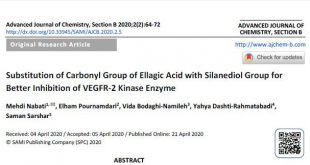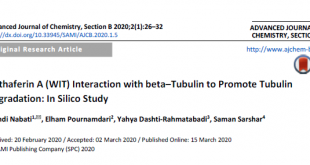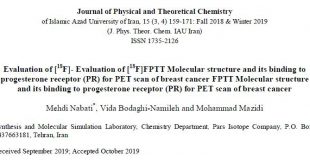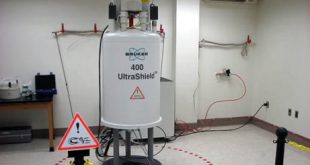Irilone as a progesterone receptor (PR) effect supporter in endometrial and ovarian cancer cell lines
Estrogen and Progesterone receptors (ER, PR) are ligand-induced transcription factor members of the steroid hormone receptor (SR) subfamily of nuclear receptors. Those receptors and their corresponding steroid hormones (estradiol and progesterone) play their roles through complex mechanisms to adjust biological processes critical for women’s health. Two common isoforms (A and B) are formed from the same gene through alternate translational start sites; PR-B relates to the full-length receptor, while PR-A is an N-terminally shorten version (additional amino acid at position 164 in PR-B). PR-A is mostly localized in the nucleus, whereas PR-B continuously transports between nuclear and cytoplasmic compartments. Progesterone is recognized to its vital role in regulation of the normal physiology of the ovary, uterus, mammary gland, as well as brain progress during childhood. Progesterone also acts via the maintenance of the cardiovascular, central nervous and skeletal systems. Despite the fact that many drugs act through PR-mediated mechanisms, few educations have identified the natural product components detected in herbal supplements that act via the progesterone receptor. Red clover which is used to alleviate menopausal symptoms contains phytoestrogens. These are phenolic non-steroidal compounds with a comparable steric structure as steroidal estrogens. This similarity donates them the chance to bind to steroid receptors and exert estrogenic or anti-estrogenic effects. Previously reports suggested that the red clover constituent kaempferol showed progestogenic effects in ovariectomized rats. Irilone identified to be present in red clover plants has recently been recognized in red clover based compounds for the first time, accounting for about 10 % of the total isoflavone content. This extract supported the effect of progesterone in both endometrial and ovarian cancer cell lines. In these cancers, progesterone acts associated with positive outcomes and reduced hazard of disease occurrence.
In 2019, Dr. Mehdi Nabati and Dr. Hamideh Sabahno studied the electronic properties and spectroscopic (FT-IR and UV-Vis) profiles of the novel antagonist irilone as a progesterone receptor (PR) effect supporter in endometrial and ovarian cancer cell lines by quantum-mechanical (QM) and molecular docking methods. They believed that the outputs of their study will provide a deep and accurate understanding of the possible biological activities of the title compound. Their computations showed that the title compound can make a complex with progesterone receptor (PR) using steric and hydrogen bond (HB) interactions. The docking analysis showed that the receptor (PR-B isoform) residues Pro-696, Gln-725, Met-759, Arg-766, Glu-695, Asp-697, Leu-758, Lys-822, Ile-699, Val-698 and Trp-755 play main role in receptor-ligand complex formation.
For more information about Irilone as a progesterone receptor (PR) effect supporter in endometrial and ovarian cancer cell lines, please read the following article:
 Iranian Chemist شیمیدان ایرانی
Iranian Chemist شیمیدان ایرانی




